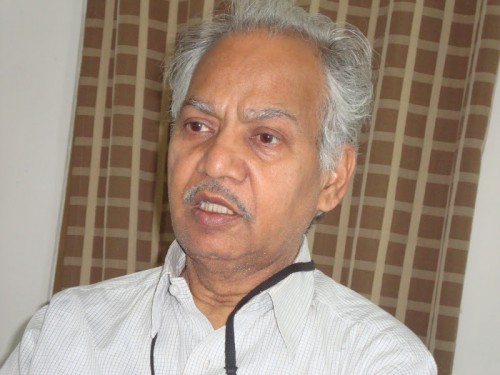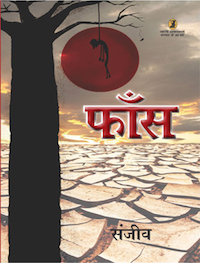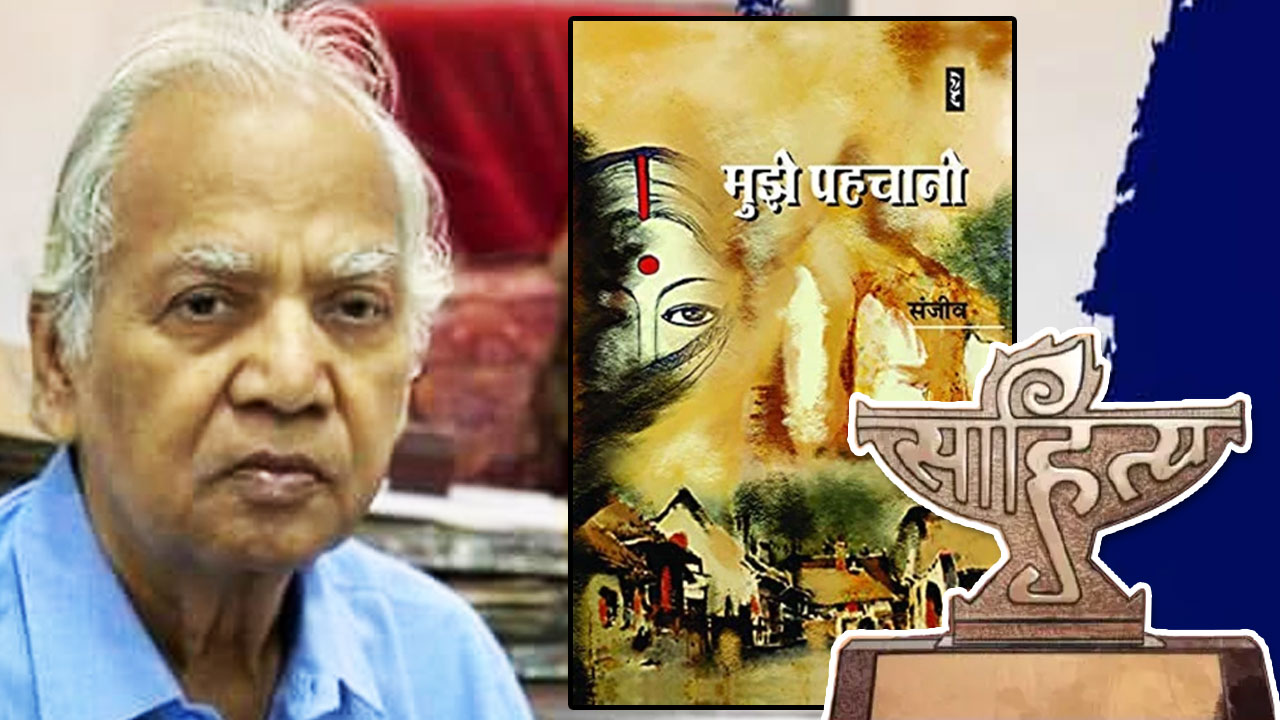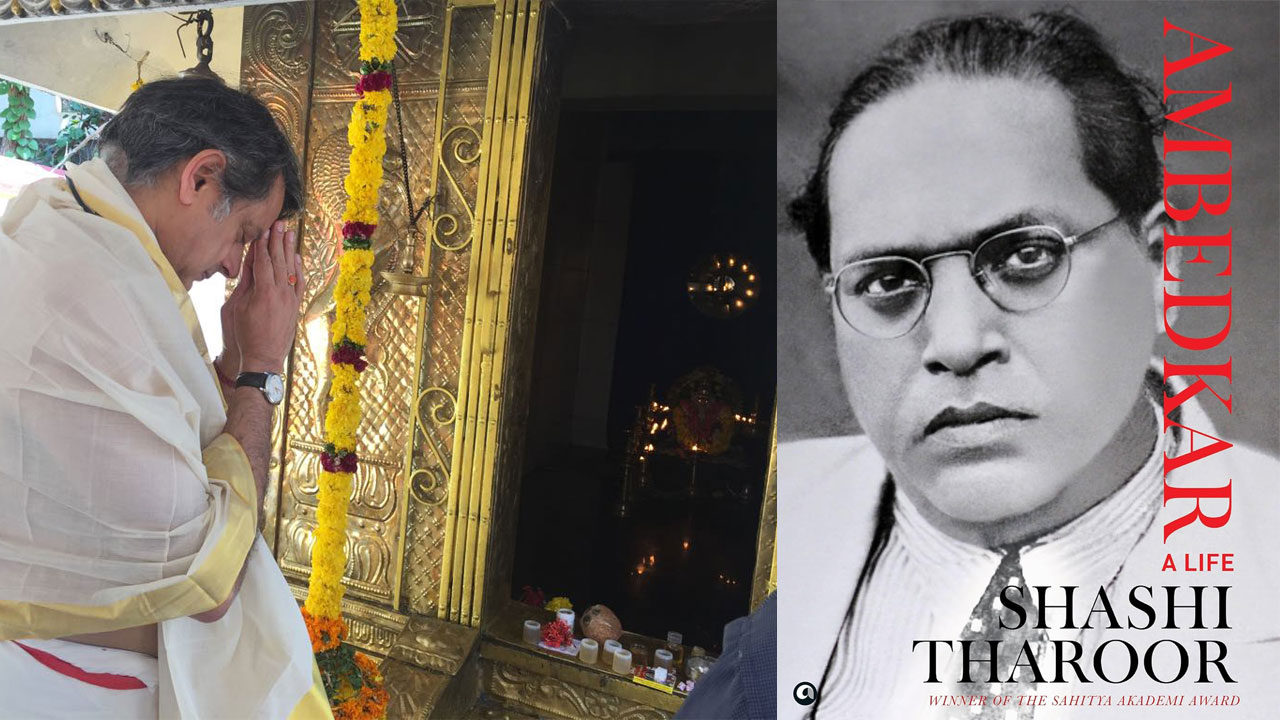
In my view, a simple but precise definition of Bahujan would be all those people who make a living through physical work, viz farm labourers, farmers, cobblers, rickshaw-pullers, construction workers, fishermen, masons, etc and who lead a miserable existence in spite of the innumerable government schemes introduced, seminars organized and special numbers of magazines brought out in their name. They all are Bahujans. The religious-casteist forces cannot tolerate their existence even on the margins of the society. Just see the duality of the powers that be: they pose as opponents of religious and casteist forces but draw strength from them. Against this backdrop, if an author produces a novel like Phaans, delving deep into the life of the farmers who toil day and night to fill our stomachs, it can well be described as a unique and significant contribution to the Bahujan cause. The writer Sanjeev spent some time in Vidarbha, shared the pain of the families of farmers who had ended their lives and then picked up the pen.
Phaans is Sanjeev’s latest novel. The backdrop of the novel is the growing number of farmer suicides throughout the country over the last two decades. Though the novel is set in Bangaon village of Maharashtra’s Yavatmal district, it relates the tales of woe of farmers of Andhra Pradesh, Karnataka and other parts of the country who were first lured into using GM seeds and then offered loans. Partly due to drought and partly due to the tampering with nature, crops started failing, ruining the farmers and crushing them under the unbearable burden of loans. They had little option but to end their life. Sanjeev has chosen a very burning issue. Perhaps, in Hindi, it is for the first time after Premchand’s Godaan that the wretchedness and despair of rural life has been portrayed with such vividness.
Literature can mirror the social reality, provided the author has the capacity to comprehend and then portray it. The novel begins by touching on the various restrictions put on girls in our society. The attitude towards girls in the Bangaon village of Yavatmal is the same as in the Hindi belt. “Chhoti Mulgi” (younger girl), decides to visit her friend’s village after attending a cultural programme at her school and all hell breaks loose. “What is the use of educating these girls? Will they become barristers?” asks father Shibu and announces that she will no longer be allowed to go to the school.
Do they behave in the same manner with the boys? Can they? Why this discrimination? On the third page of his novel, Sanjeev asks the same question that our prime minister had asked from the ramparts of the Red Fort.
In its opening pages, the novel recreates the ambience of Indian countryside. Sanjeev is a storyteller of rural India. His every word contributes to the building of an authentic picture. For the farmer, cow, bullock and goats – all are part of his family. Makdu, the bullock, is the waasru (calf) of the house – who reminds them of Makri, the cow. “After her, we could not buy a cow. Don’t sell him.” Godaan immediately comes to the mind and also Heera-Moti (the story of two bullocks). Such a vivid picture of the torturous death of Lalu, the bullock, trapped in slush, can only be created by someone who has himself been amid the slush.
In the name of development, tribals have been deprived of everything. They live in forests but cannot even touch the leaf of a tree without the permission of the government. They are forced to endure all sorts of atrocities and the government connives with their oppressors. Some government officials are thrashed by women for behaving indecently with them and the government machinery moves swiftly – as if some great crime has been committed. Everybody is summoned.
They are asked, “Do you know that you cannot even touch a tree in a forest without permission, you cannot take away a twig or a bamboo?”
Someone from the crowd responds, “And what about pigs, bears and monkeys? Do they take permission?”
“Don’t argue”, growls a government official.
“And if we had allowed your constable to do whatever he wanted with our girls, then it would have been okay? What was wrong if she hit back?”
Shivaji was holding Shibu’s one hand and Maharana Pratap the other. What could Shibu do? Shivaji and Rana Pratap? You may ask: where have these characters appeared in the 21st century from? Please bear with me. Shakun’s husband Shibu will tell you that our Sunil Kaka has a bit of both. His is a booming voice of caution. “Be warned. Don’t take any loan. Be warned. Don’t even think of suicide. No one will voluntarily go to Yamaraj…!” Alas, life is not as simple and plain as Sunil Kaka’s voice (page 27).
Ever since forest guard Khudabaksh caught hold of his younger daughter Kalawati’s hand, his resolve has been shaken. These girls! Today, it is Khudabaksh, tomorrow it will be another, the day after someone else! He will have to marry her off soon. Sunil said, “But don’t take loan.” Granted. But what about the older loans?
How life takes a turn. Now father Shibu’s only worry is to get his daughter married. Today, it is Khudabaksh, tomorrow it may be someone else. She had already been stopped from going to school.
Mohan Waghmare, a farmer, goes to a government officer for loan. Every word of the novel pierces the heart of the readers. The governments that seek votes in the name of farmers treat them like dirt. It seems the British are still ruling the country. There are a thousand excuses for not giving loan for farming. Dozens of rules are cited. But just say you want a loan to buy a motorcycle. And it will be sanctioned in a jiffy. Mohan Waghmare’s family was somehow pulling on with the help of loans when drought struck the entire region. The drought forced him to part with their bullock (brother). One was bitten by a snake and he had no option but to sell the other to a butcher. Now, Mohan himself takes the place of the bullock in the plough. Sindhu Tai is holding the butt of the plough. But the noose of religion is tightening around their necks. “You have sold your bullock to a butcher. Great sin. Cow slaughter is unpardonable. There is only one way to atone. You will have to put the bullock’s lead around your neck and go around with a begging bowl, seeking alms. Till ‘shuddhi’ you can neither enter your home nor speak as humans do,” is the prescription of Pandit Niranjan Dev Giri. He is from Kashi. The pandits of Kashi have no equals in the world. They had made Shivaji a Kshatriya (page 57).

Caught between religion and development, the simple farmer becomes a fable, a legend. Some say he was seen at Wardha bus stand, others say they saw him at Sewagram, still others declare he was at this or that temple – begging, making the sound ba … ba.
The stranglehold of caste, the gnawing hunger and the longing for equality made them seek refuge in Buddhism. Sanjeev has caught the root of the problem. Why did Babasaheb Ambedkar and others embrace Buddhism in the 1950s? They got tired waiting for liberation. Ultimately, they gave up and quit their religion.
The description and depiction of flowers and leaves found in Phaans can be given only by someone who is immersed in them. For Sanjeev, village is not a picnic spot or a subject of debate in seminars in cities. He knows it like the back of his hand.
The flawed model of development is pushing the farmers towards ruin. Foreign breeds of cows are here – they yield 30 litres of milk every day. But they have only complicated the problem. How do you feed the cows that yield so much milk? When filling your own stomach is difficult, how do you arrange fodder for them? You go to the market to sell the milk but there are no buyers. The only beneficiaries are touts. They got the commission when the cow was given to the farmers and now that the farmers are being forced to sell them off – these are happy days for the moneylenders and the touts. Well-known journalist P. Sainath has dwelt on these issues in his reportage. The foreign breeds of cows disappeared slowly and with them, indigenous cows and calves also disappeared. The blind race for development has resulted in barren land and barren cattle. And after suicide, barren humans too.
One speciality or limitation of the novel is the presence – whether symbolic or otherwise – of all contemporary characters. But Sanjeev’s depiction of the heroes of Maratha background is excellent. There are some new words for the readers. “Lugda” meaning sari, “nabra” (husband), “mulga-mulgi” (boy-girl). But the rather excessive use of English words, as if they are a part of the spoken language, strikes a jarring note. A Hindi writer has access to the vast treasure of words from rural dialects. Why not tap it?
To sum up, Sanjeev’s new novel Phaans is an excellent example of Bahujan literature.
Published in the October 2015 issue of the FORWARD Press magazine
For more on Bahujan literature, visit http://www.amazon.in/dp/





